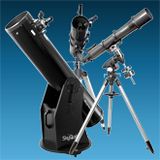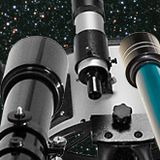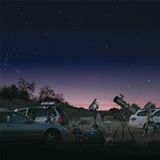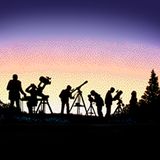
Every beginning astronomer has to grapple with the topsy-turvy topic of image orientation in the telescope. Depending on the type of telescope and whether or not it is used in combination with a star diagonal, the image you see may be either upside-down, backwards, rotated, or normally oriented.
For most astronomical observing, it makes little difference if an object is seen upside-down or at an otherwise odd angle (after all, there’s no "right side up" in space!). However, for terrestrial viewing you certainly don’t want to see everthing upside-down. And when stargazing, it’s hard to compare what you’re seeing to your star chart if the image is inverted or flopped. Let’s sort out the different image orientations seen through different types of telescopes, and see how diagonals figure in the equation.
Refractor and Cassegrain telescopes, when used without a diagonal (which isn’t usually the case), produce an inverted (upside-down) image. The view in Newtonian reflectors is also inverted, or rotated at an angle depending on the eyepiece angle with respect to vertical. Straight-through finder scopes also invert the field of view. If you’re using a star chart, all you have to do is turn it upside down to match the view through the eyepiece.
Refractor or Cassegrain telescopes used in combination with a standard 90 degree "star diagonal" will provide a right-side-up, but backwards (mirror-reversed), image. Using a star chart is difficult; you have to read it from the back, or do the mental gymnastics to flip the image in the eyepiece left to right to match the chart.
Fortunately, there are special "erect-image" or "correct-image" prism diagonals available that solve the problem, providing a correctly oriented view. Porro prisms (classical erecting prisms) provide correct images while allowing viewing straight through the scope. They do not work with Newtonian reflectors, however.


















